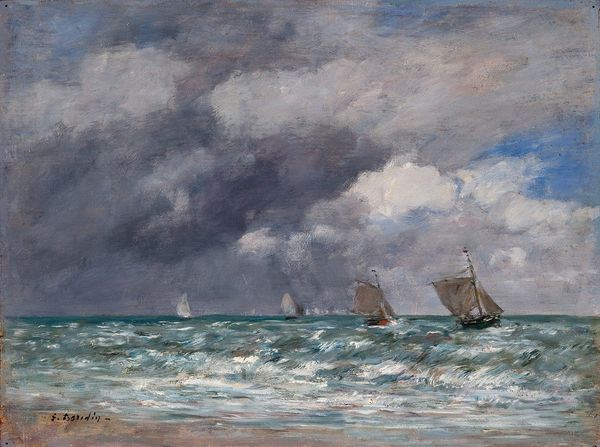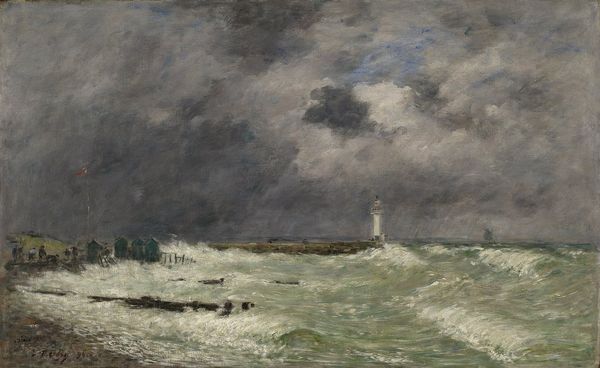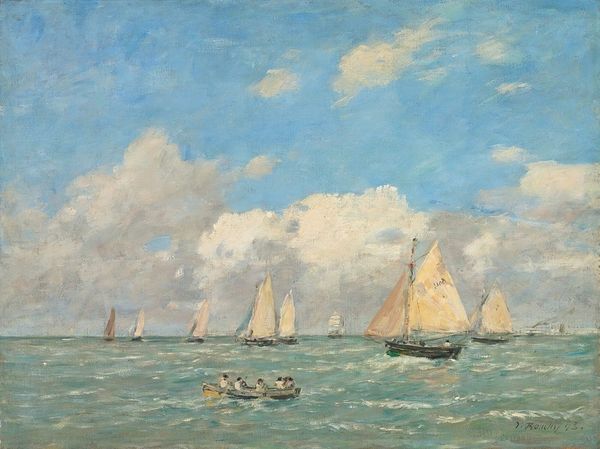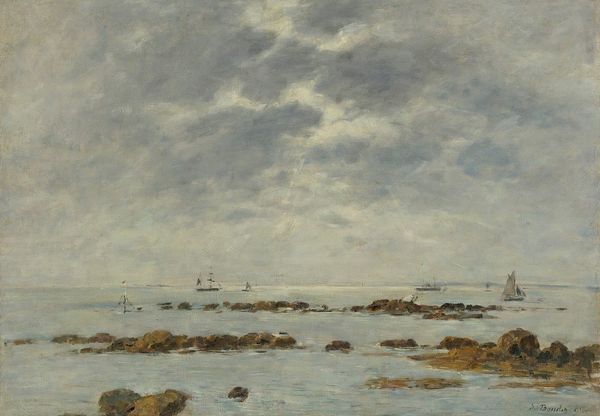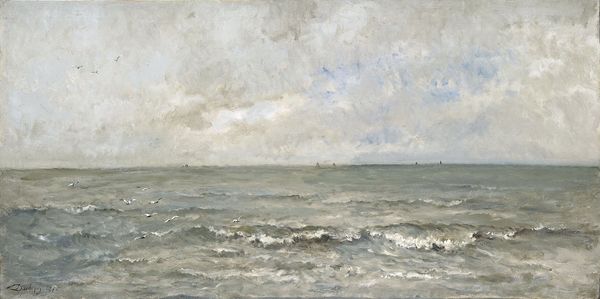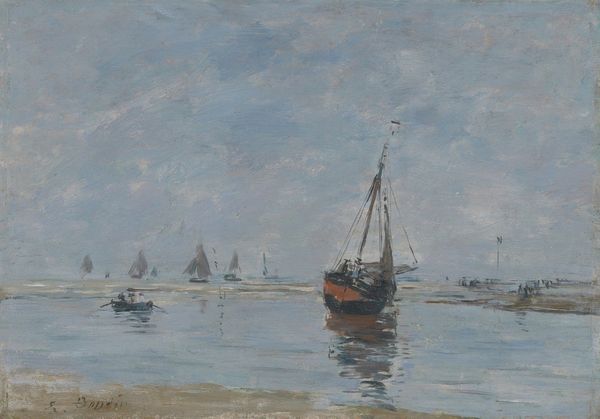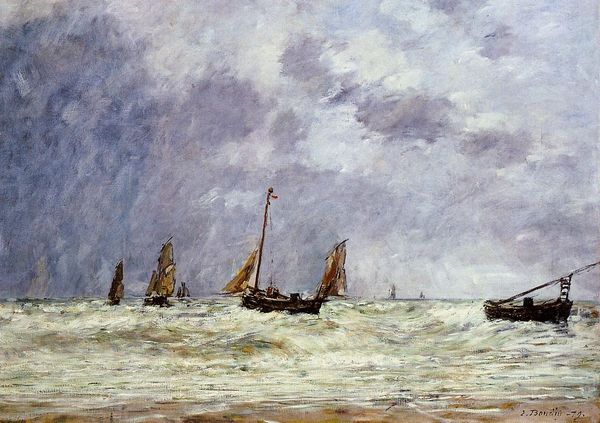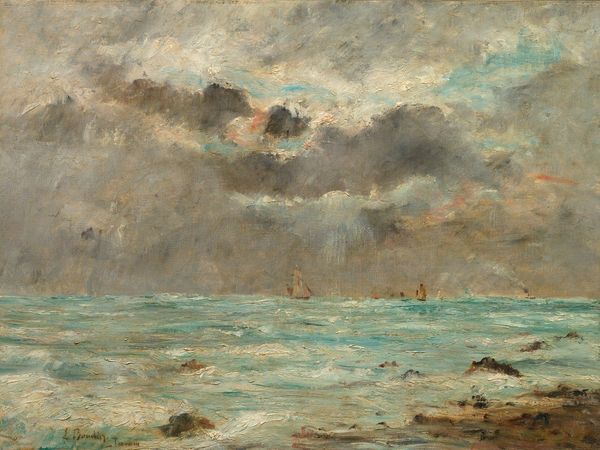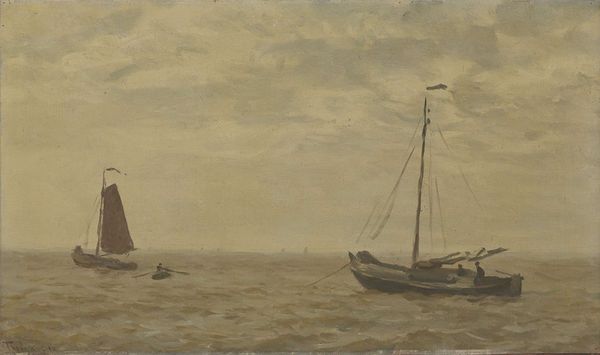
Copyright: Public Domain: Artvee
Curator: Here we have Eugène Boudin's "Voiliers Sur La Mer," painted sometime between 1888 and 1895. Editor: It’s such a captivating work. The brushstrokes feel so raw, conveying the immediate energy of the sea. There is something somber, almost unsettling, about the muted palette, even the impasto application mimics turbulent movement. Curator: Boudin, often regarded as a forerunner to Impressionism, was a master of capturing fleeting atmospheric effects, something Monet deeply admired. This piece particularly emphasizes his dedication to plein-air painting, depicting boats under, perhaps, an overcast sky. There’s an entire school built on this dedication. Editor: The materiality tells a fascinating story here. Look at the canvas, you can almost feel the artist battling the wind and salt spray to capture this scene directly from nature. The very act of its creation speaks to the intense physical demands of working en plein air, the precarity, as it were. What would this have cost him in materials? Labor? Time? Curator: Exactly, and Boudin's work was deeply influential in shifting artistic practices away from the controlled environment of the studio, democratizing the subject, moving outside the gallery wall. He wasn’t exhibiting at the Salon consistently; his audience and income wasn't secure. It’s also fascinating how these images served a burgeoning tourist market. Editor: I also find myself thinking about the vessels themselves— these small boats adrift on what could turn from peaceful waters to treacherous seas. Each one carries so much promise, but is at the mercy of labor and weather. The social context of these seafarers, their stories, becomes embedded in the final piece. Curator: I think you’re right— the seascape almost feels like a stage for human drama playing out against a grand backdrop. There's definitely a romantic undertone, echoing the themes of nature's power that were dominant in artistic circles, like travel, freedom and isolation. Editor: Ultimately, it’s a compelling piece about transience and instability. The physical instability inherent in the way it was created mirrors the environmental precarity, I see both embodied. Curator: Absolutely. It underscores the importance of considering an artist’s work within its wider social, artistic and market contexts to fully understand it.
Comments
No comments
Be the first to comment and join the conversation on the ultimate creative platform.


